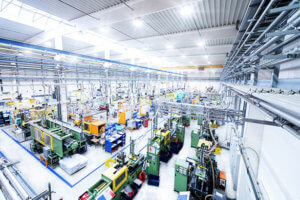Drive Continuous Improvement by Manufacturing in Mexico
02.26.19 For almost any business, long-term strategies or goals are centered around producing better products while keeping costs low. Many methodologies, including Six Sigma, Lean manufacturing, and more aim to achieve this through the pursuit of continuous improvement. Companies seek to constantly look at small ways to incrementally improve their processes and work more efficiently so they can reduce costs without sacrificing quality.
For almost any business, long-term strategies or goals are centered around producing better products while keeping costs low. Many methodologies, including Six Sigma, Lean manufacturing, and more aim to achieve this through the pursuit of continuous improvement. Companies seek to constantly look at small ways to incrementally improve their processes and work more efficiently so they can reduce costs without sacrificing quality.
In many companies, especially in manufacturing industries, seeking “continuous improvement” in this way eventually leads them to explore offshoring—often as they start to expand and find that scaling their business in the US is not cost-effective. However, there are many options when expanding, each with pros and cons:
- Expanding within the US means maintaining complete control over your production lines, but labor, real estate, and other costs are high
- Offshoring to countries like China offers access to inexpensive labor, but can mean working with inflexible supply chains, long delivery times, and potentially sharing intellectual property
Faced with these choices, many manufacturers instead choose to nearshore and establish operations in Mexico. Manufacturing in Mexico allows companies to pursue continuous improvement because it offers lower operations costs and skilled labor so quality does not need to be sacrificed.
Lean Manufacturing in Mexico
Continuous improvement demands that companies are always looking at the whole picture—seeing the entire process by which they bring products to market—so they understand how tweaking one part (the supply chain for one component, for example)—affects other aspects. It can be easy for executives to just focus on one aspect of the manufacturing process, or the end product, and try to make changes without realizing the effects on the rest of the process.
Before moving manufacturing to Mexico, for example, you’ll want to examine how it will affect your supply chain—what kinds of supplies, equipment, or raw materials will you importing into Mexico? You can also look into customs regulations and trade compliance—will the labor savings offset those potential costs? (Most likely, yes, but it’s always good to get the full picture before making the move.)
Read our tips to build a seamless supply chain when nearshoring.
Once you start manufacturing in Mexico, you can further the process of continuous improvement. One strategy is the Lean manufacturing principle of sorting, which requires companies to review their workflows and look for components of the manufacturing process that can be sacrificed without sacrificing quality. This can lead to more efficient, productive workflows.
Companies can also seek to standardize the production process, which means locking in the step-by-step actions required to complete each product.
We often see companies look to Mexico nearshoring as an option once they have made their fabrication and assembly products as lean as possible. They reach a point where they see diminishing returns or would start to sacrifice quality. At this point, they need ways to lean their labor and supply chains and setting up operations in Mexico is an attractive way to do that.
Once operations are running in Mexico, the money saved in labor costs can then be directed to research and development on new products or innovations or even further continuous improvement efforts.
